What are the Best Low-Maintenance Perennials to Grow in Minnesota?
Finding the Best Low-Maintenance Perennials was harder than I thought. Some require extensive care, others are prone to pests, and lots are just not simple & quick enough to maintain.
That’s why I created a list of the 10 Best Low-Maintenace Perennials to Grow in Minnesota!
This ultimate guide will give you the Best Low-Maintenance Perennial to Grow in Minnesota, why you should grow them, and even how to grow them.
Read THIS Before Growing Perennials in Minnesota
Knowing what hardiness zone Minnesota is in is critical to understanding the best perennials that can be grown.
It can be the difference between your perennial garden and yard thriving or dying.
Minnesota is mostly considered Hardiness Zone 5, while some of the lower-level regions are Hardiness Zone 6.
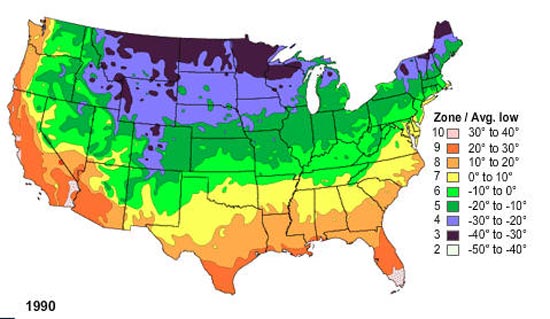
10 Best Low-Maintenance Perennials to Grow in Minnesota
#1. Lavender
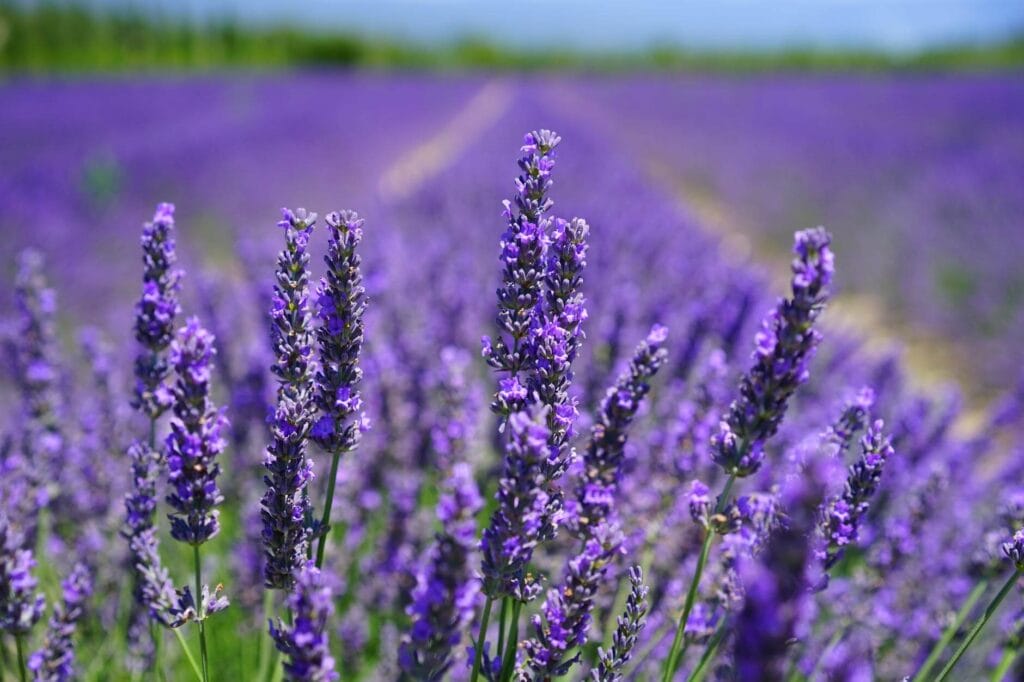
Popular Varieties: English, French, Lavandula
Why Grow Lavender in Minnesota?
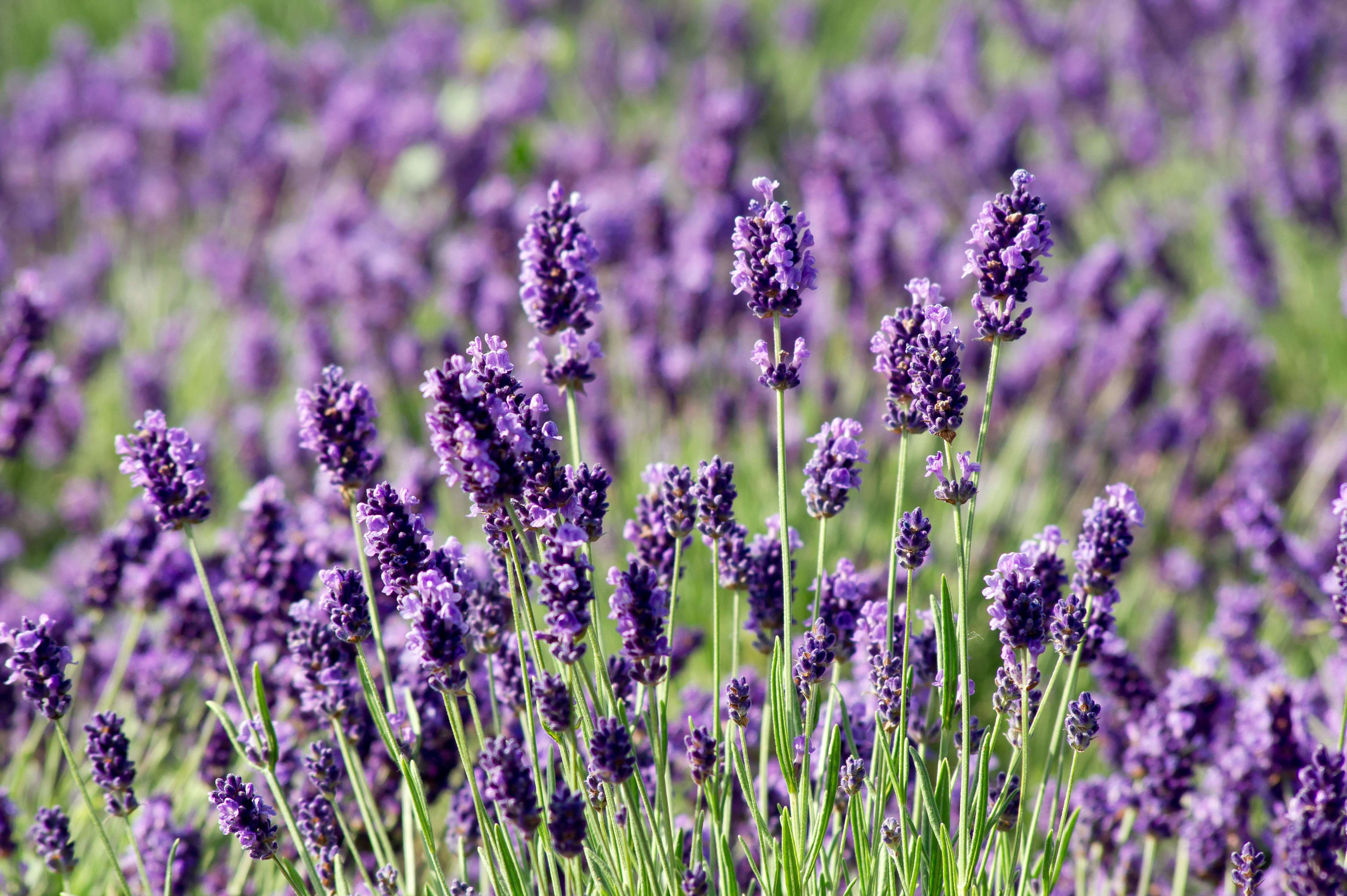
Thrives in Heat:
- Lavender is a great perennial flower or herb that can bloom in late spring or early summer all the way until late fall. You’ll notice the hotter it is the more blooms there are!
Low-Maintenance:
- Flowers & Herbs typically are not low maintenance. But lavender are one of the easiest flowers or herbs to grow. They require no deadheading for more blooms and can grow almost anywhere.
Perfect for ANY Garden:
- Some flowers or herbs require all sun or all shade to grow. Not Lavender. They can grow anywhere in your garden, in hanging baskets, window boxes, and anywhere else you can think of. As an added bonus they can even attract pollinators.
Related: BEST Flowers to Attract Pollinators
THESE Could Harm Your Lavender
Humans:
- Like many other perennials, the biggest threat to lavender is humans. Most of the time you may accidentally destroy them with too much care, with the lawn mower, or even trying to prune them too much.
Additional Resources
Learn More About Lavender HERE
#2. Daisies
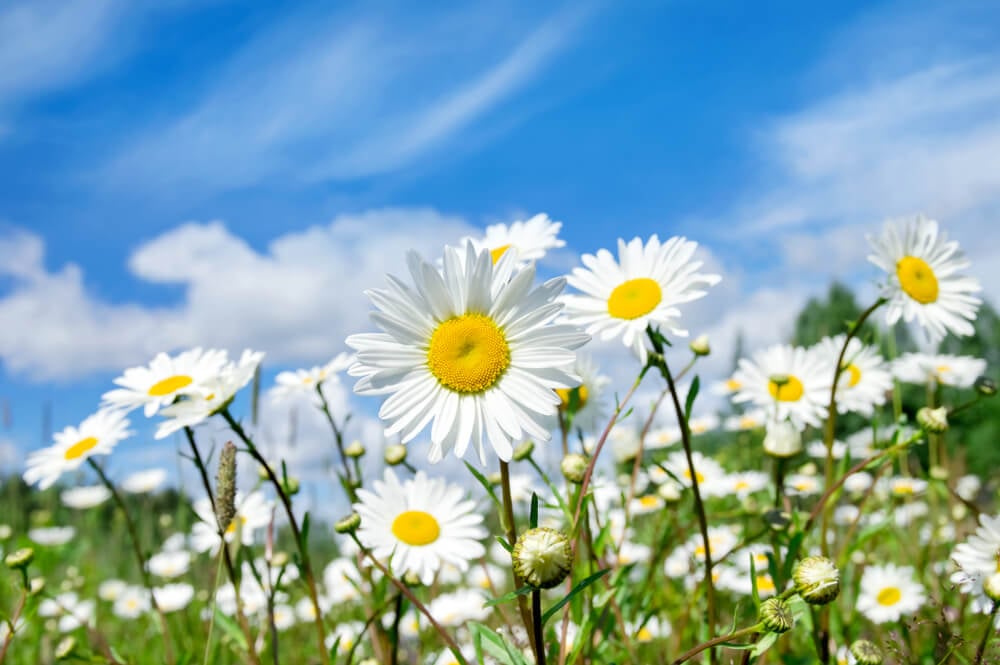
Popular Varieties: English, African, Shasta
Why Grow Daisies in Minnesota?
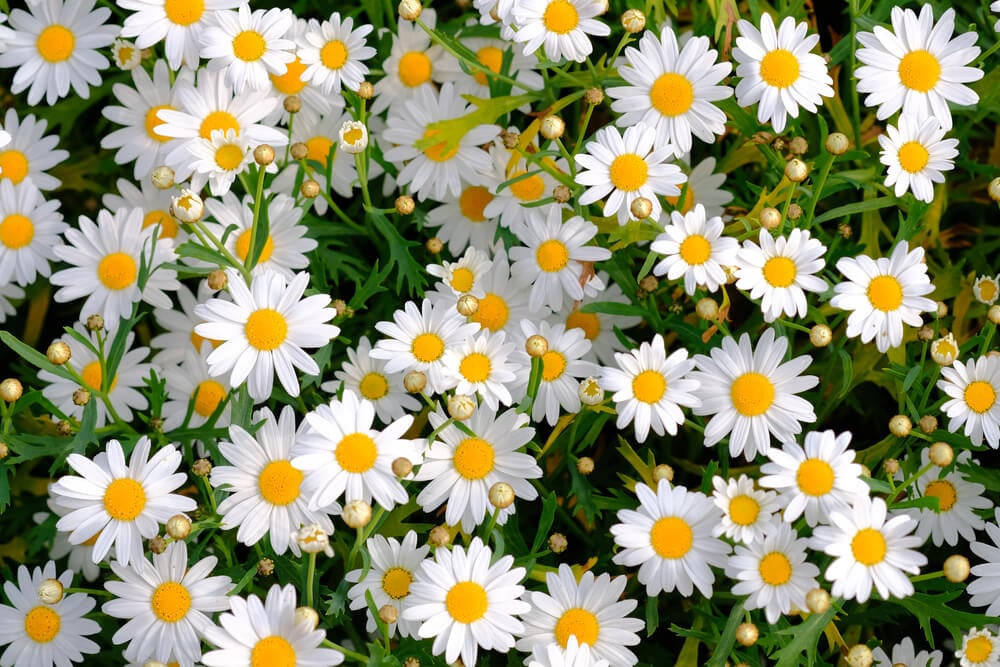
Beautiful Summer Blooms:
- Daisies are a great plant it and forgot about it flower. Plant bulbs in the fall and actual plants in the spring and watch this beautiful flower come back year after year with little to no maintenance.
Heat-Tolerant:
- Not every plant on this list can tolerate heat and full-sun. Daisies though thrive the hotter it gets and the more sunlight it receives, making this the perfect flower to plant anywhere in your yard.
Pest-Resistant
- It seems like deer and rabbits will eat almost any flower or plant in your garden. Deter them from your flower garden with the pungent flavor of daisies..
THESE Could Harm Your Daisies
Humans
- Before Daisies bloom their plant look like weeds. Sometimes humans will accidentally mow them, cut them, or remove them before they have a chance to grow and bloom.
Diseases & Fungus
- Wet conditions and cold conditions usually mean more disease and fungus. While it does not happen often daisies plants come fall prone to fungus and disease and cause no blooms or death of the flower.
Additional Resources
Learn More About Daisies HERE
#3. Dahlia
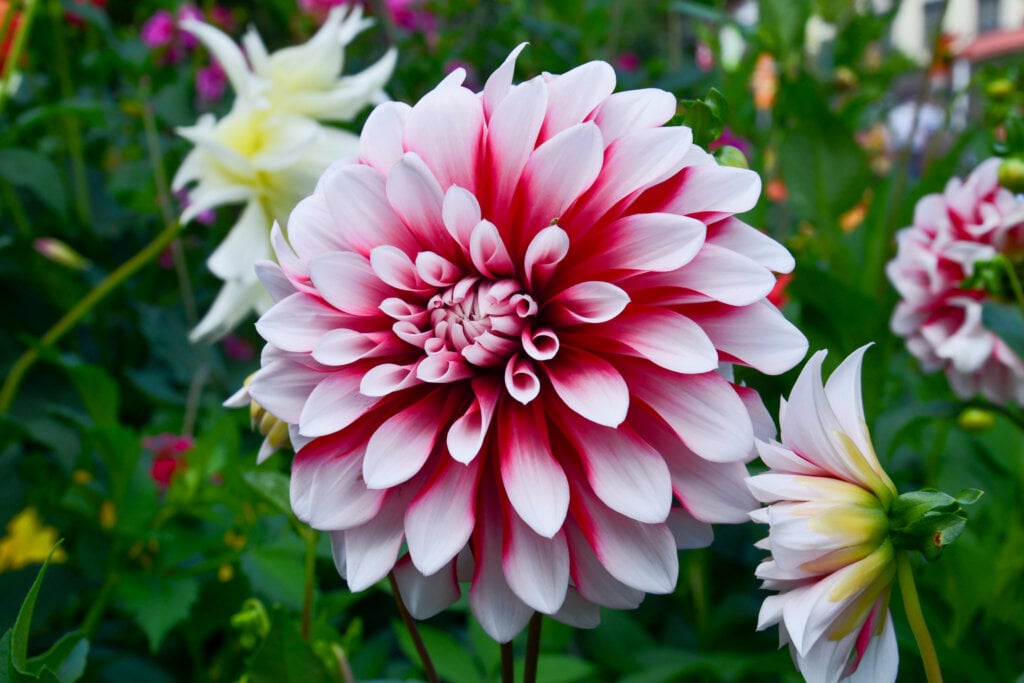
Popular Varieties: Pinnata, Bishop, Imperialis
Why Grow Dahlias in Minnesota?
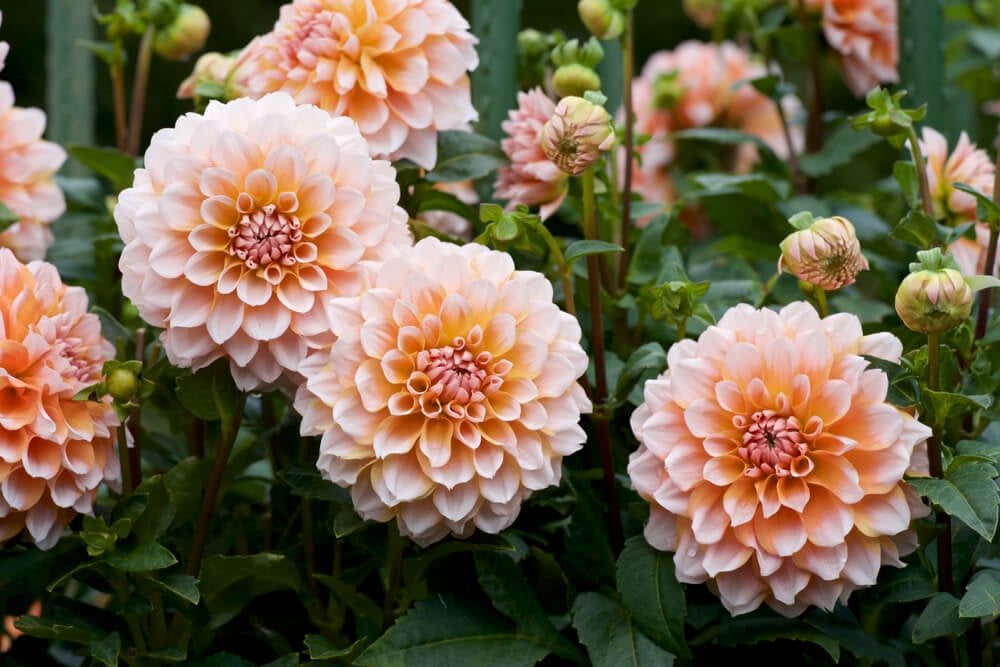
Low Maintenance:
- Dahlia is the easiest flower to grow. You do not need to fertilize it, barely need to water it, it can be planted in any soil, and you never have to worry about it!
Perfect in Containers:
- The best spot to plant dahlias is in gardening containers. This is because you can grow them anywhere, such as in your house, on your patio, and even transplant into a window box.
THESE Could Harm Your Dahlia
Garden Pests:
- Like several other flowers on this list, Dahlias are prone to garden pests. Unlike other flowers garden pests like squirrels, deer, and rabbits will eat bulbs, flowers, and even the plant itself.
Additional Resources
Learn More Dahlias HERE
#4. Bee Balm
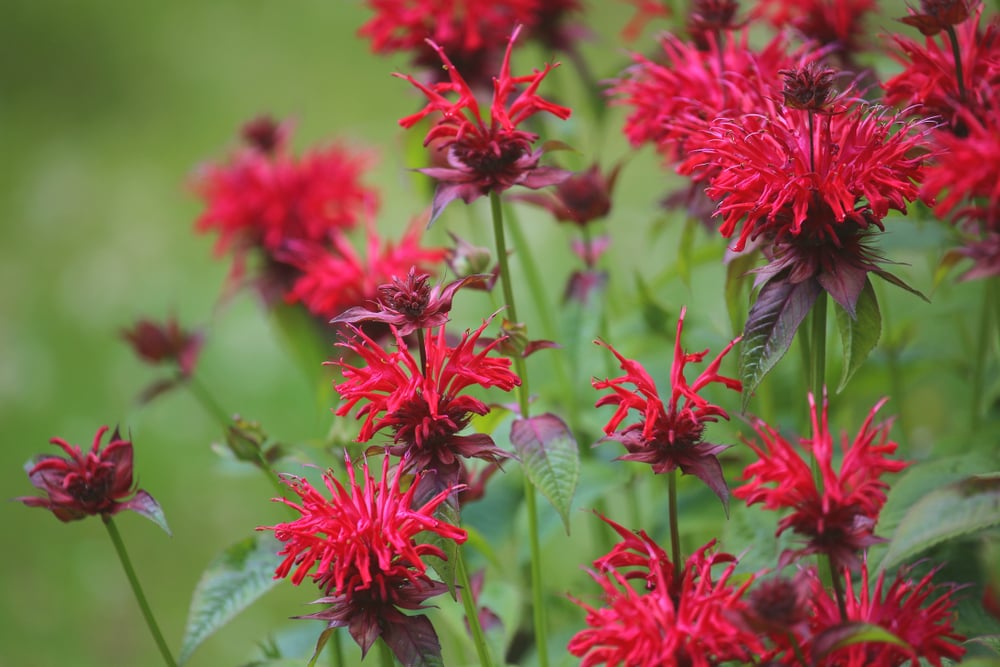
Popular Varieties: Scarlet, Wild, Lemon, Spotted
Why Grow Bee Balm in Minnesota?
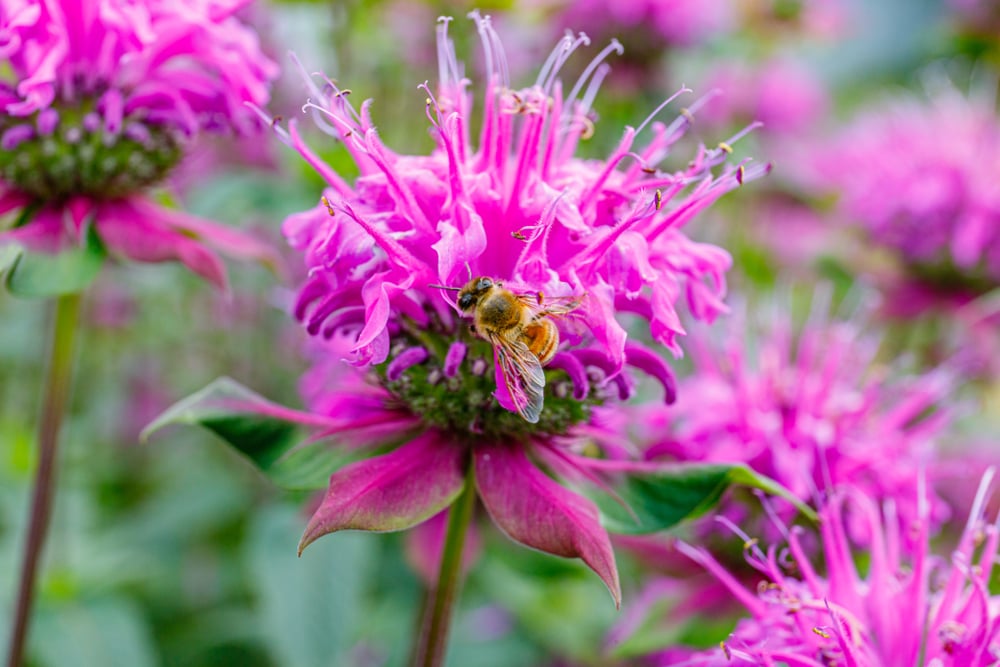
Thrives in the heat:
- While you can plant your Bee Balm in the fall for a headstart, Bee Balm will have beautiful blooms in early spring to late spring no matter how hot the weather gets.
Easy to Grow from Seed:
- Bee Balm is the easiest and most popular type of flower to grow from seed. It requires less sunlight, water, and care to germinate compared to other flowers during the winter.
Perfect in All Types of Garden:
- Some flowers only do well in certain soil. Not Bee Balm. You can grow this flower in any soil and it will thrive.
THESE Could Harm Your Bee Balm
Too Much Water:
- Bee Balm is beautiful flowers, but if the soil gets too wet fungus can cause root rot. Not only this, but it can affect the colors and how long blooms last.
Additional Resources
Did you know Bee Balm is one of the best flowers to attract not only birds but hummingbirds?
#5. Milkweed

Popular Varieties: Common, Butterflies, Swamp
Why Grow Milkweed in Minnesota?
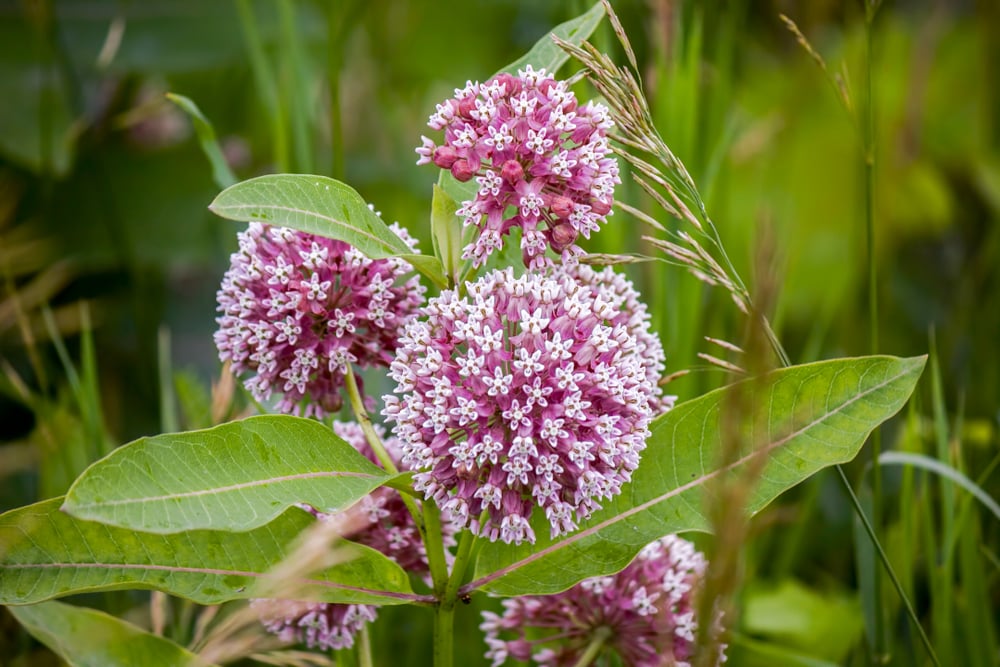
Beautiful:
- Not only is milkweed easy to maintain, but it is beautiful. Expect lovely shades of pink and purple all summer long to attract monarch butterflies and other pollinators.
Perfect for Any Yard:
- Some flowers only do well in certain soil and sunlight. Not Milkweed. You can grow them in containers, window boxes, raised garden beds, and even in poor soil.
THESE Could Harm Your Tulips
Humans:
- Not many elements can affect milkweed. It thrives in heat and cold. Disease and pests don’t bother it. Typically, humans destroy it on accident because they do not realize it is a perennial flower and pick it early and don’t realize how great of a pollinator it is and remove it from the soil.
Additional Resources
Did you know milkweed is the perennial flower of choice for Monarch Butterflies? You’ll attract more butterflies with milkweed than any other flower.
#6. Joe Pye Weed
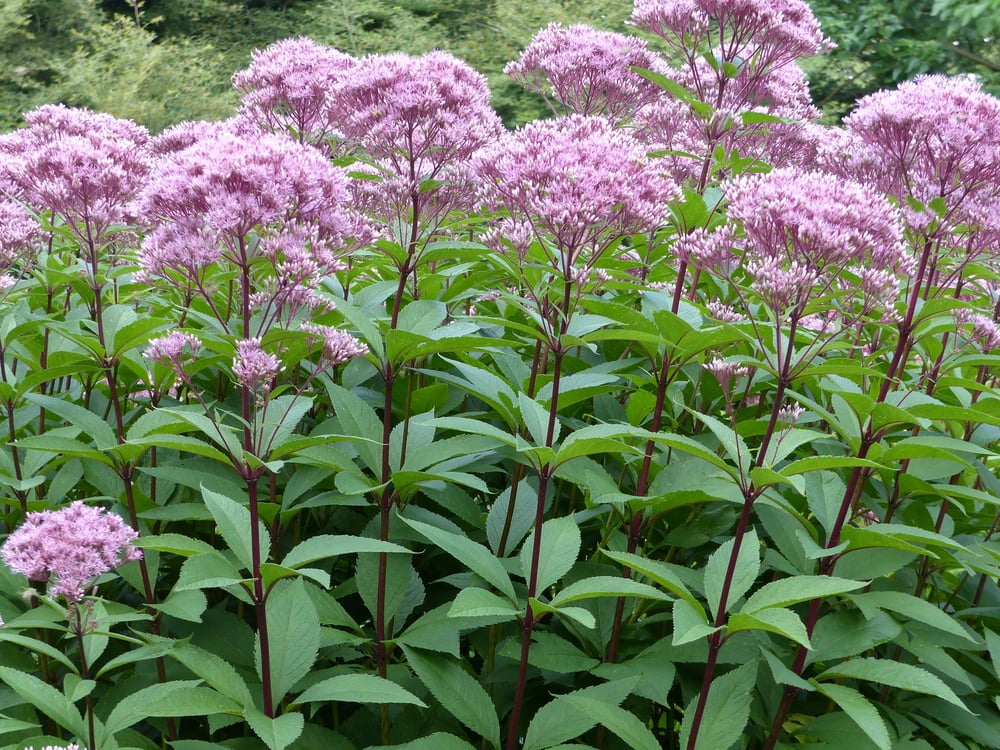
Popular Varieties: Sweet, Spotted, Trumpet
Why Grow Joe Pye Weed in Minnesota?
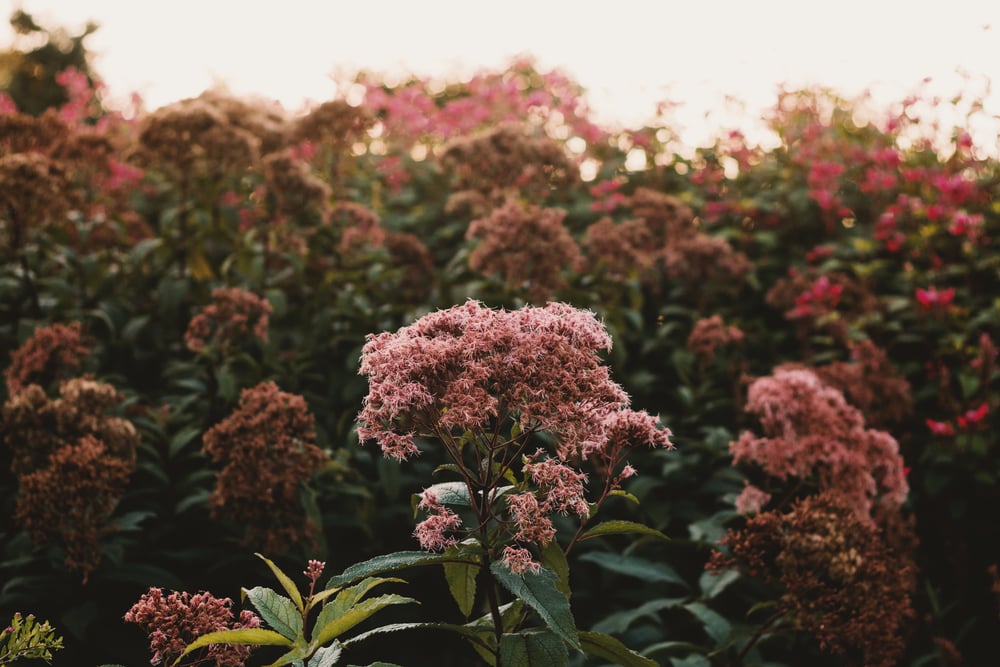
Thrives in the heat & cold:
- If you have early spring frosts or late fall frost then Joe Pye Weed is the perfect flower to plant for an extended flower garden season.
Continuous Blooms:
- Joe Pye Weed are another flower that has continuous blooms for 6-8 months of the year. All you have to do is deadhead them.
Attracts Pollinators:
- Attracting Pollinators are hard. But it doesn’t have to be. Just plant your Joe Pye Weed flowers and watch bees, butterflies, and birds come to it.
THESE Could Harm Your Joe Pye Weed
Spider Mites:
- Joe Pye Weed is one of the more insect-resistant flowers. But its weakness is spider mites. Spider Mites are known to quickly destroy marigolds if not remedied early.
Related: 10 Best Insecticides for Flowers
Additional Resources
Did you know Joe Pye Weed can grow almost 7 feet tall. If you don’t want them that tall just prune them back!
#7. Daffodils

Popular Varieties: Trumpet, Large Cup, Small Cup, Double, Triandrus
Why Grow Daffodils in Minnesota?

Little Care:
- These low-maintenance flowers require very little care. You don’t have to prune it or deadhead it to have more flowers bloom. Not only this, but it thrives in cold and hot!
Hardy:
- Daffodils are probably the hardiest flower on this list. They can survive long periods of cold, heat, garden pests, and sometimes even disease and fungus. You plant them and they’ll keep coming up year after year.
THESE Could Harm Your Daffodils
Garden Pests
- Daffodils can quickly be eaten in early spring by garden pests like deer and rabbits who are hungry. Typically this happens before any type of flower grows.
Frost
- While cold and frost won’t hurt a daffodil, if it happens late in spring when flowers have bloomed it will stunt, diminish color, and even kill the flower bloom itself.
Additional Resources
Learn More About Daffodils HERE
#8. Lily

Popular Varieties: Common, yellow, dwarf
Why Grow Lilies in Minnesota?
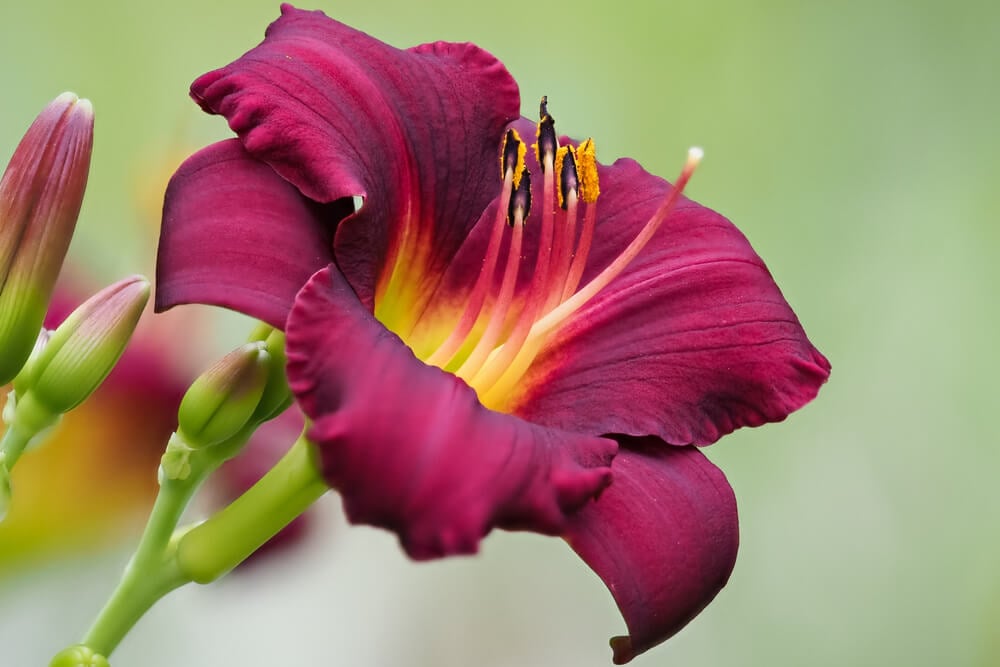
Blooms All Summer:
- If you pick the right type of lily, it can bloom not only in spring but also throughout the summer. And if you like different types you can’t plant these flowers so different ones bloom at different times in the year. Best of all is that they are perennials!
Great for Small Spaces:
- Lilies are one of the only flowers on this list that grows perfectly vertical. This means it is perfect for small spaces, urban gardeners, or in between other plants as a cross-pollinator.
THESE Could Harm Your Lilies
Garden Pests:
- Deer loves lilies, especially Daylilies. Make sure to plant this flower close to your house, in a raised garden bed, or in a fenced-in area of your yard or garden.
Wetness:
- Most flowers, including Lilies, tolerate rain, heat, cold, shade, and droughts. But too much rain can cause root rot and other diseases that will kill your Lilies.
Additional Resources
Did you know that Lilies are the most popular summer-blooming flower in Minnesota? And it is also one of the least expensive perennials flowers to grow.
#9. Black-Eyed Susans

Popular Varieties: Black-Eyed Susan, Brown-Eyed Susan, Cutleaf Coneflower
Why Grow Black-Eyed Susans in Minnesota?
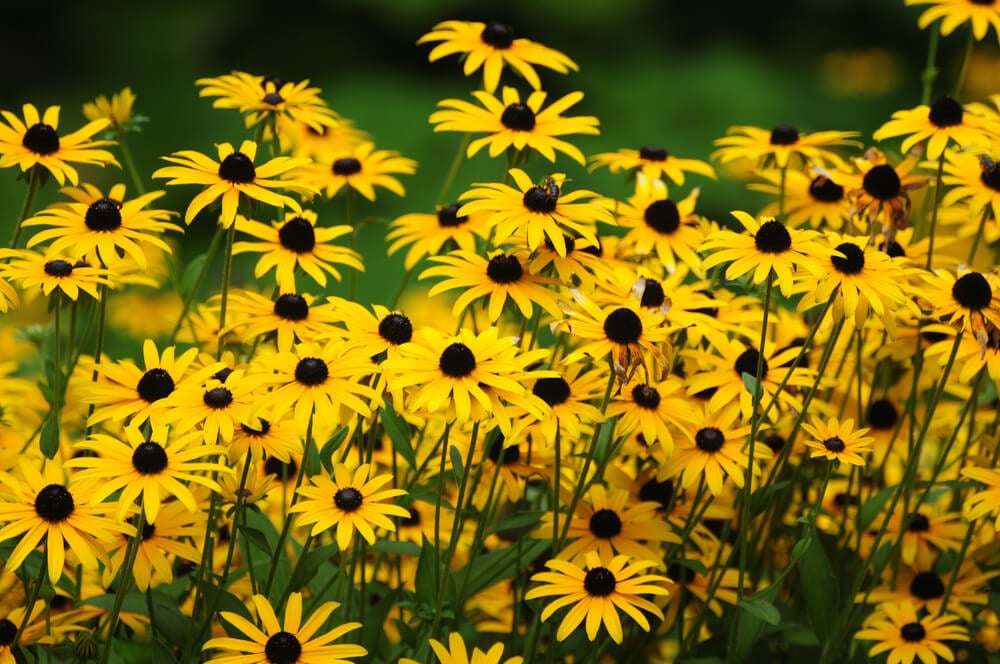
Thrives in Droughts:
- Black-Eyed Susan do extremely well in droughts and although flowers may not bloom as plentiful, they will still thrive.
Perfect for All Gardens
- Black-Eyed Susans are the perfect flower that can be planted anywhere in your yard, garden, and even inside your house for all-year summer blooms. While they thrive in gardens they also do well in compacted soil or in mulched areas of your yard.
Attracts Pollinators:
- If you want to attract butterflies, bees, and birds to your flowers and garden all summer long then grow black-eyed Susans! This is the perfect flower to attract pollinators not only in the summer but even in early fall.
THESE Could Harm Your Black-Eyed Susans
Weeds:
- There aren’t many items that can harm or kill your black-eyed Susans. One of the few things that can harm your flower is weeds. Once weeds begin to take over your garden or yard they will overtake your flower, hindering it from growing and blooming.
Additional Resources
Learn more about black-eyed susans and other spring flowers that attract pollinators HERE.
#10. Coneflowers
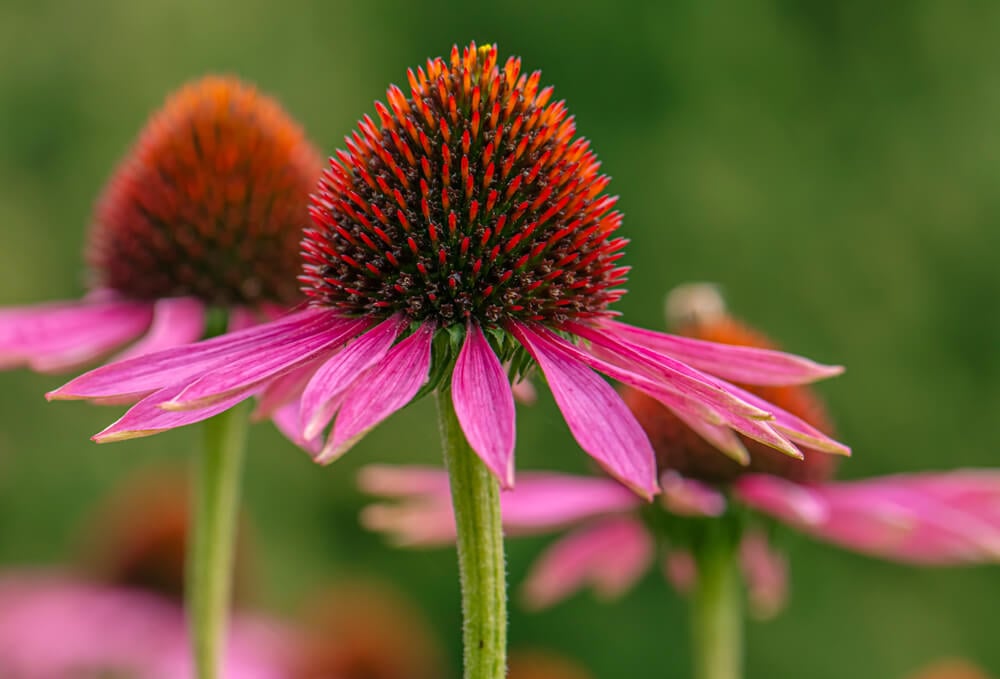
Popular Varieties: Purple, Yellow, Pale Purple
Why Grow Coneflowers in Minnesota?
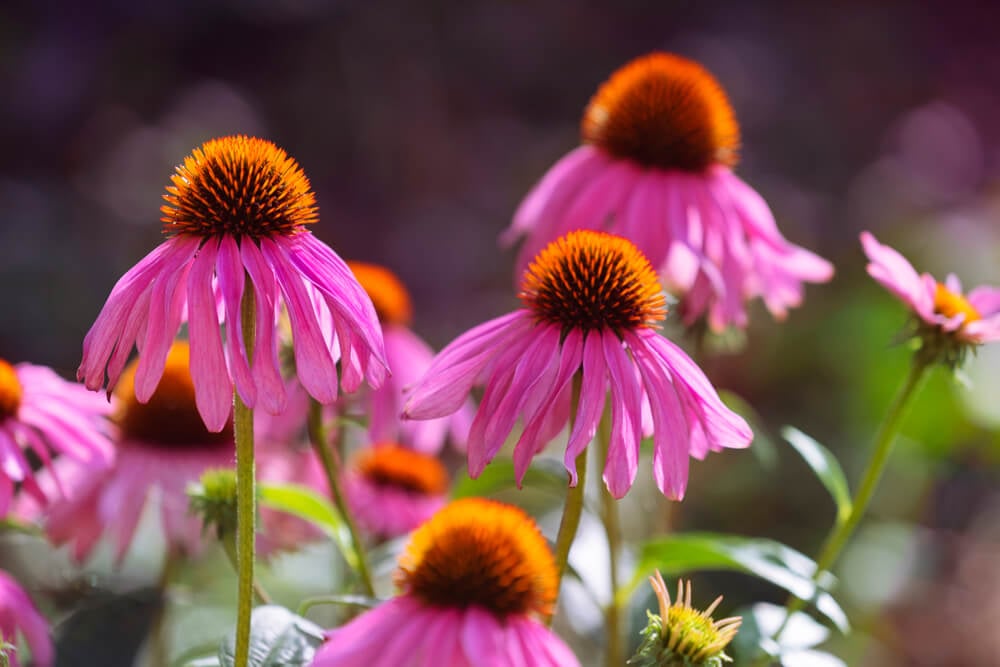
Perfect for All Summer Gardens:
- Coneflower flowers are the perfect flower that can be planted anywhere in your yard, garden, and even inside your house.
Numerous Varieties:
- There are almost 24 variants of Coneflower flowers. They come in many sizes and bloom beautiful colors of pink, purple, white, yellow, etc. They are easy to grow and can be planted anywhere in the world making them a favorite of beginner flower gardeners.
THESE Could Harm Your Coneflowers
Insects
Garen pests won’t bother coneflowers, drought and rain won’t either, but insects will. Japanese beetles, potato whiteflies, aphids, and mites will not only harm but destroy your coneflowers.
Additional Resources
Learn How to Grow Coneflowers HERE
Common Growing Factors of Minnesota’s Best Flowers
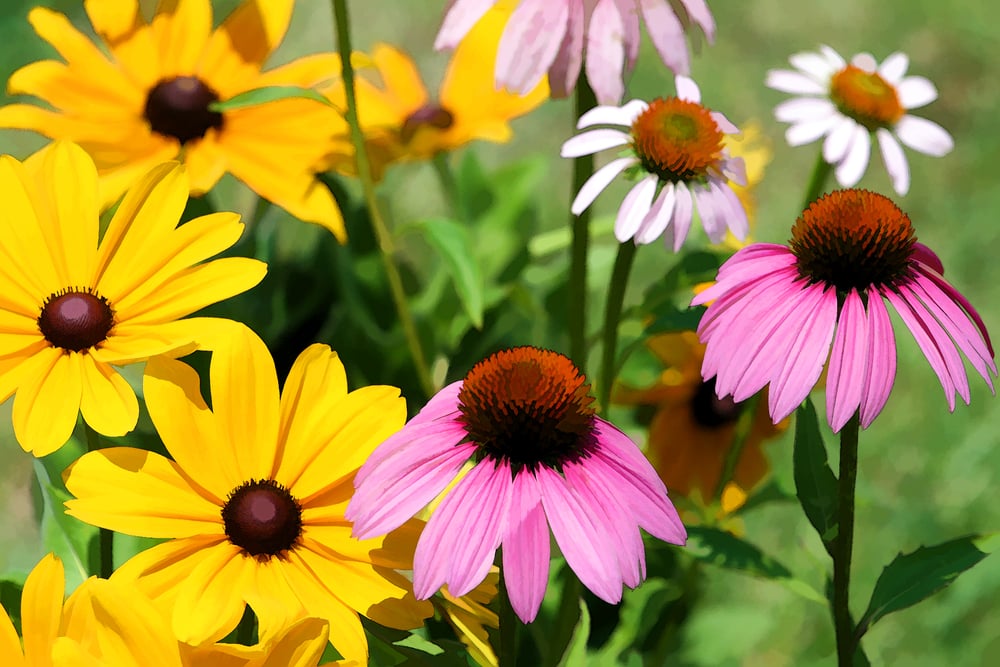
As a reminder, the below factors are common for the Best Low-Maitenance Flowers to Grow in Minnesota:
- Thrives in Heat & Drought
- Thrives in Cold
- Can Grow anywhere in your yard
- Hardy against Pests & Insects
- Requires Little Care & Water
- Attracts Pollinators
- Ground Covers
- Great for Small Garden Space
- Durable & Versatile